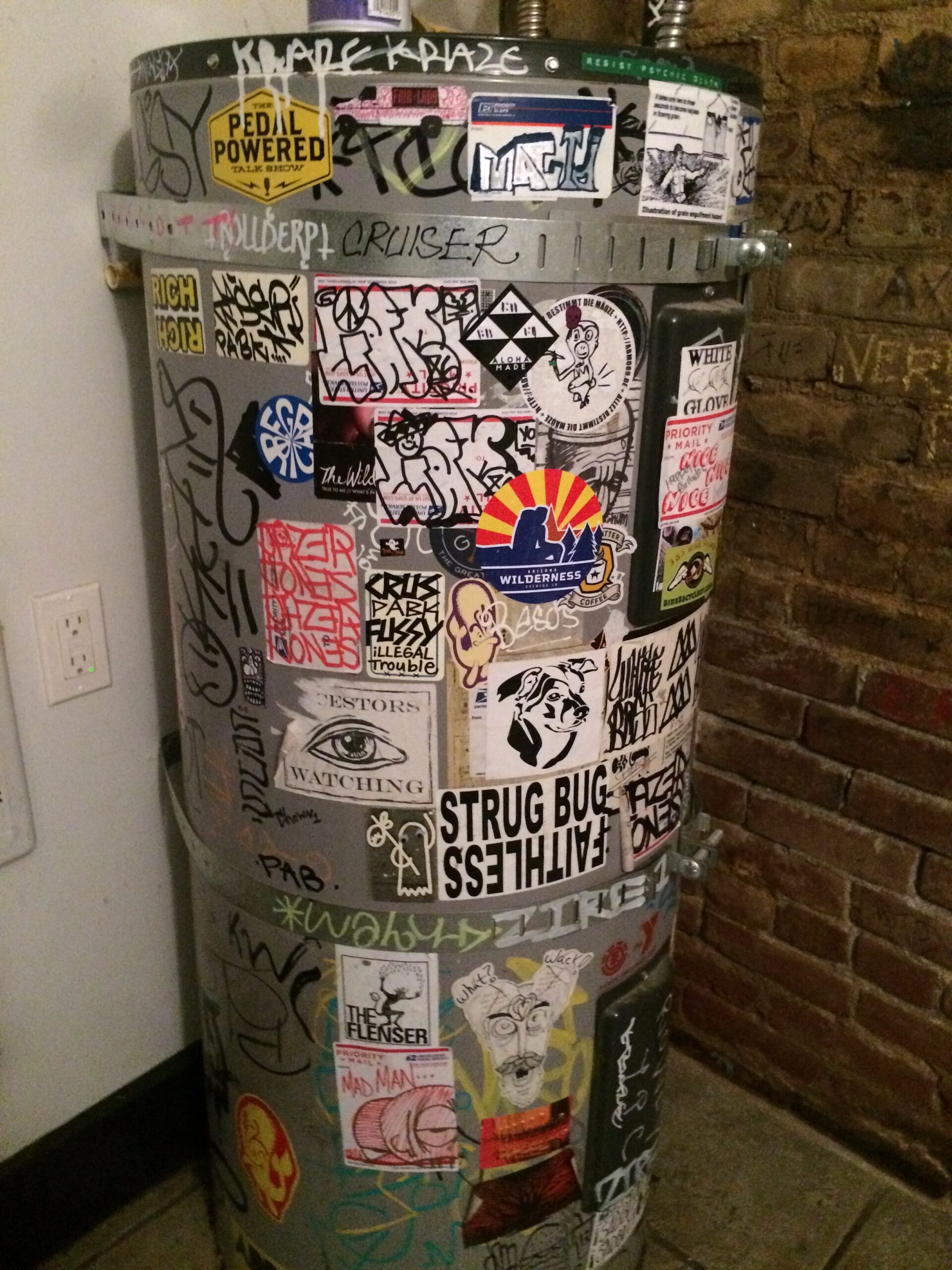15 miles, 5 marketing terms, and a lot of stickers

Derwyn Harris
Talkoot CPO and Co-Founder
 I attended the Outdoor Retailer Winter Market with some Talkoot team members, and for me it felt like I was finally home. I used to attend the summer Outdoor Retailer back in the late ‘90s when I worked at Outside Magazine, and having grown up involved in, and surrounded by, the outdoors, the show always felt like Mecca. My life took a turn when I left Outside and moved to Portland, OR, not necessarily in a bad way, but just different. I dove head first into software and technology and the companies I sold to and worked with were businesses like Honeywell, Intel, SpaceX, Boeing and Faraday Future — all very cool companies for sure, but there is something special about the outdoor industry and the people that work in it. So it was a thrill for me to walk through the show doors nearly two decades later now with very different purpose, to meet with and learn how companies manage their brand narrative and copy production.
I attended the Outdoor Retailer Winter Market with some Talkoot team members, and for me it felt like I was finally home. I used to attend the summer Outdoor Retailer back in the late ‘90s when I worked at Outside Magazine, and having grown up involved in, and surrounded by, the outdoors, the show always felt like Mecca. My life took a turn when I left Outside and moved to Portland, OR, not necessarily in a bad way, but just different. I dove head first into software and technology and the companies I sold to and worked with were businesses like Honeywell, Intel, SpaceX, Boeing and Faraday Future — all very cool companies for sure, but there is something special about the outdoor industry and the people that work in it. So it was a thrill for me to walk through the show doors nearly two decades later now with very different purpose, to meet with and learn how companies manage their brand narrative and copy production.
Talkoot is built for content and ecommerce managers, and the writers. They’re not the main attendees at the show but some do typically join at least in the initial days. Those who do show up have an agenda and a focus and are not necessarily expecting folks like us to wander up to them. Because we have established customers at the show, we weren’t a complete unknown, but we were just new enough that we knew we needed to make the rounds by going booth to booth. We wanted to respect people’s time so our goal was to simply introduce ourselves, get a contact name, and learn a bit about the current landscape of copy production.
My team members from Talkoot were seasoned copy production experts, but I was a newbie so I was most excited about seeing firsthand reactions from companies on the front lines dealing with copy creation pain. We spent three solid days walking the show, covering a total of 15+ miles, and by the end of it my feet hurt and my voice was gone, but I had learned a ton.
I came away with five key insights.
1. Content marketing terms are still in flux
When you are walking up to a complete stranger who is busy, tired, and glazed over from the monotony of person after person approaching them, you can tell they are instantly trying to determine what category you fit into, friend or foe. We knew walking up that nine times out of 10 the person at the front of the booth was not the person we needed to talk to. Our introduction needed to help them figure out who we needed to talk to.
Often we started with, “Is there someone from marketing here?” Marketing was our intro word and it set the tone. With this single question, we had an in with most companies. It was also broad enough that the person at the counter was sure to know of someone there at the show. However, this second person was guaranteed to be between tasks, very distracted, and still potentially not the right person. We had to get to the point and figure out where this person fit within the marketing organization.
At this point we used terms such as “copy production,” “product descriptions,” “product content,” and “ecommerce,” as we looked for the eyes of our listener to sparkle with a sense of clarity and recognition. Most often, “ecommerce” tended to get the best reaction, but it was a double-edged sword because interpretations of what that meant varied greatly. It also usually meant that we were about to be handed the name of a person who was not at the show, which put an indefinite pause in our communication. See next section to understand why.
My takeaway is that the rise of content marketing has increased the terms we use to describe what we do. However, the product copy that ends up on an ecommerce site has been lost in the shuffle.
2. ecommerce is being or has been split from marketing
Many companies have decided that ecommerce is complicated enough (and important enough) that they have created separate departments dedicated to this area of the business. A post back in 2014 describes this in more detail. Most of the companies we spoke with had just made the shift. It’s hard to tell what this will mean going forward, but from our perspective it seemed to put copy production into a bit of a no-man’s land. The focus of ecommerce tends to be with SEO, channels like Amazon, website design, and metrics. The copy itself, as Talkoot CEO Brian Hennessy mentioned in a recent post, can often be weak due in part to its current priority in the marketing food chain. With all the hullabaloo about a unified brand story (google search “importance of brand story”), fragmented departments and groups will make this harder. A strong toolset combined with clear process that includes copy throughout will help.
3. Copy is no longer invisible but is still obscured
Most people acknowledged that copy was written somewhere but how and when and by whom was unclear. The ecommerce teams in particular were unaware of where the original copy was written, one person thought that Amazon wrote it for them. Most copy still starts with the catalog (i.e., wholesale/B2B physical copy usually not intended for consumers, which many at the show referred to as the “workbook”). Most were not clear who owned the catalog or how it impacted them.
This disconnection felt like a risk and some companies did express concern about this. Every so often we’d actually get to talk to someone in charge of the team writing the copy, and across the board it was clear this team was struggling with not being fully connected to the big picture. This means that as a product goes from concept to production and then into distribution and marketing, the content specific to that product is not being written along the way. The end result is quickly written copy that relies too much on the technical specs instead of why someone would benefit from buying the product. In short, the copy isn’t written to sell, it’s written to inform a small audience that might care about the synthetic composition.
The increased awareness of product copy gives me hope but remains a lower priority. Most feel they need to start at the top (overall brand story) and that everything will cascade down. Copy is such a good indicator of how successful you are in fully telling a cohesive brand story that it should not be considered last but potentially even first.
4. Sales cares deeply about copy
Some of our best conversations were with sales. They were the most animated and excited about our story. Being on the front lines, sales knows firsthand the degree to which product copy helps them. And it wasn’t just about the copy itself. They expressed frustration with the inconsistency of the overall brand narrative. They understood how good ecommerce copy fits in with a brand’s marketing strategy, and how clear, consistent messaging makes their lives easier.
We only spoke to a few sales folks but it was a clear takeaway for me that it was an area worth exploring more as they might be our biggest champions going forward. It did not seem like sales had any influence around content but their input would be a valuable voice of reality.
5. Stickers say a lot about a brand
I have been a fan of stickers ever since the ‘80s when I lived in Santa Cruz, California. My lowered VW bug had a carefully arranged set of stickers on the back window. Theoretically these stickers represented my personal identity. My two favorites were of course the classic simple Santa Cruz skateboard sticker that I still see today, and Stussy, which is just a cool logo. Today’s stickers still show up on car windows, but also on laptops, water bottles (especially stainless steel), coolers, old-fashioned paper notebooks, and water heaters in hip urban coffee shops.

As I wandered the OR show, my goal was to find the perfect set of stickers for the back of my new van. I was not very selective, and most companies have stickers up front on the counters, so grabbing one was easy. In the end I had about 25 stickers. Three weeks later I’m still debating which ones will make the cut to the van window.
Stickers say a lot about how a company sees their brand. The innocence and simplicity of a sticker indicates the degree to which a company maintains a concise identity all the way down to the lowly sticker. Much like copy, it seems like a small thing but it says a lot about how much you respect your overall narrative. Let’s use my van window selection process to explain this.
- I personally have to like the brand. I’m not going to put a sticker on my window of a brand that doesn’t fit my core beliefs.
- The design has to mesh with why I have respect for the brand. For example, if Apple sent me a sticker of a blue apple with the big letter “A” in the middle I would start to question my loyalty to the brand. I’m down with the rainbow logo, but that’s where I draw the line.
- Each sticker should represent its own genre. I would not put an Apple sticker next to or even on the same car as a Microsoft sticker. There are exceptions to this last rule, but only on a case-by-case basis.
So, who is winning the right to grace the back of my van? Cotopaxi has continually made the cut because I really like them as a company, but it is also a well-designed sticker. I like it because it’s just a llama head, with no brand name, which is cool. By not including the company name it doesn’t fully lay claim to a genre rule and frees up my allegiance to allow me to still consider a Patagonia sticker.
